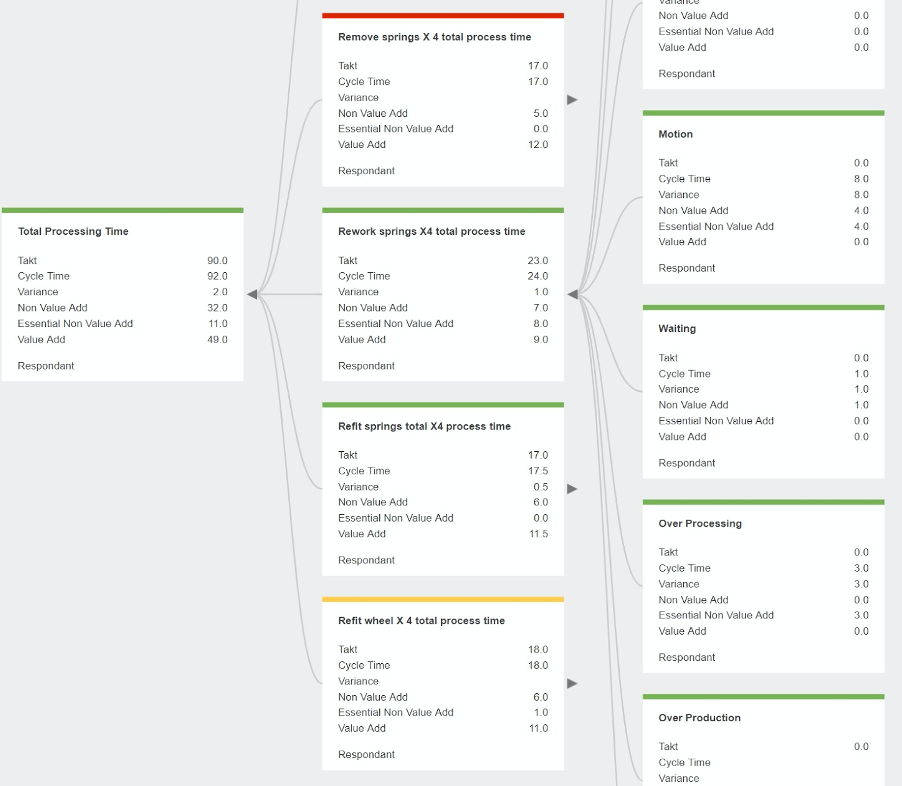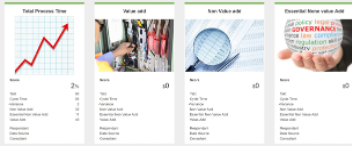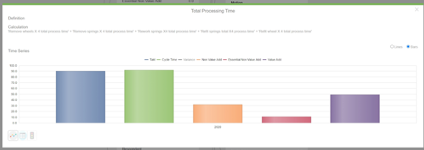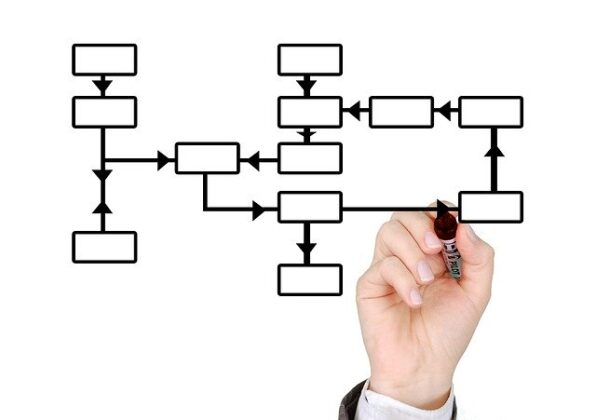Identifying and Eliminating 8 Wastes with Value Stream Mapping
The path to achieving output success in any business begins with identifying ‘non-value-add’ activities (also known as waste) A common understanding of lean methodology relates to TPS (Toyota Production System). The origins of lean manufacturing were originally conceived when Toyota sought to be the most efficient and value-driven car manufactures in the world.
TPS identified 7 types of waste within an operation, however, an 8th (and many would argue, most crucial) type of waste – human resources, was later added to lean methodology. Arriving at what is known today as 8 Wastes. By identifying and removing waste within a production process stage, true value can be added, and the optimisation of each step is made possible.
Our GM at Concerto – Paul McLoughlin is an expert in the field of change management. He has spent almost 2 decades integrating lean process methods and deploying them across multiple industries. Paul’s current focus is on process improvement consultancy, where he helps businesses transform their process strategies.
By highlighting the profitability loss associated with each stage of waste, it becomes obvious that there is an imperative need for the integration of technology for process improvement. Value Stream Mapping is a powerful tool that enables the visualisation and simulation of waste reduction.

“There is waste in every single process. By seeing waste, you can remove non-value-add activities. This helps you to reduce time and increase value.” Paul McLoughlin
The acronym TRIMWOOD will be used to explore each of the 8 Wastes
TRANSPORT
Examining transportation as one of the 8 wastes exposes the unnecessary and oftentimes excessive physical movement of any or all of the following:
- Equipment
- People
- Materials
- Tools
Facilitation of task completion may require the unnecessary transportation of objects, without adding any value to the overall process.
Transportation wastes can often trigger additional wastes, such as labour overheads, waiting time, fuel and energy costs. Transportation waste may also reduce value, especially if a product is being mishandled. Value Stream Mapping and modifications in factory layout can significantly reduce transportation waste.
Refer to our Premcar case study to learn how they saved 40% of their build time, through the elimination of bottlenecks and improved efficiencies on the production line.
RESOURCE
The resource element in the 8 wastes pertains to human resources, specifically – under-utilised human potential. This is the only waste in lean methodology that does not relate to a manufacturing process. Identification of this waste enables organisations to implement effective development training.
Are employees tapping into their complete pool of knowledge? Are they being empowered to do so? Perhaps further training is required. The workers who are closest to their daily processes can recognise more easily than their superiors, where problems or opportunities may lie.
Under-utilised human potential may manifest due to:
- Inadequate training
- Poor internal communication
- Poor management
- Lack of employee involvement in policies and procedures
Business and process improvements can occur when workers’ knowledge, talent and complete skillsets are recognised and effectively utilised. Employees can help increase value and drive change when they are more actively involved in decision making within their department.
INVENTORY
Inventory waste occurs when there is an overproduction or overstocking of a good. It can also relate to ‘in-office’ waste. Excess inventory that adds no value, is a burden on financial resources and prohibits the production process from flowing.
Inventory waste is often the result of a weak process link between manufacturing, scheduling and purchasing, whereby poor forecasting, over purchasing, or overproducing, can lead to a discrepancy between supply and customer demand.
Off-shoots of inventory waste include:
- Nonconforming product elements may be present in a finished product, due to inadequate quality control
- The product may no longer be relevant by the time it is ready for sale.
- Product defects
- Financial constraints – when money is tied up in inventory costs
- Holding costs – related to excess inventory (of either: raw materials, WIP, final product)
Inventory waste can be reduced if there are clearly defined purchase minimums and maximums at each production stage. Process mapping can help eliminate over purchasing of raw materials and help refine the buffers between production steps.
MOTION
Motion waste relates to the physical movement of an employee – bending, lifting, stretching. To address this particular waste, you must ask, does the worker have everything they need to complete a task, in an easy-to-access location?
This can also include the unnecessary motion of raw materials and equipment. When unnecessary and excessive physical motion occurs, there is a loss of profitability. Process mapping can ensure that placement of all necessary tools and equipment are in optimised locations, to reduce motion waste.
Motion waste can result from:
- Poor workplace layout
- Inefficient process design
- Sharing of tools and equipment
- Siloed operations
Value output will be increased when workspace layout and accessibility of equipment is considered with thoughtful design.
WAITING
Waiting is one of the easiest of the 8 wastes to identify. If people are not actively engaged in a process step, then they are waiting. This waste may include workers waiting on other employees to complete a task or to provide instruction, waiting on materials or equipment, or equipment sitting idle.
Some causes of waiting:
- Unplanned downtime
- A delay in set-up
- Inefficient communication
- Ineffective process planning
Any form of waiting within a company costs money in labour costs and additional overheads. Product defects can also result from waiting, as there may be a rush to ‘catch-up’. The non-value-add activity of waiting can be remedied if task time is accurately measured and processes are standardised.
OVERPRODUCTION
Overproduction is an output where more than what is required to meet either the organisation or the customer expectations, has been produced.
Some questions for your company to consider:
- Do we have unnecessary processes in our business, that result in overproduction?
- Do we produce something quicker than needed?
- Have we produced a product that we have no customer for?
- Have we generated more internal reports than we need?
- Are our set-up times unnecessarily long?
By adopting the ‘Just in Time’ philosophy, the opportunity for process improvement becomes clearer. Using ‘Takt Time’ is an effective method to ensure that the rate in which a product needs to be completed aligns with the customer need. Reducing manufacturing set-up times can also help production processes to flow.
OVER-PROCESSING
Over-processing is going above and beyond the expectations of your customers, and what is required within the business.
There may be an issue with equipment design – high-precision equipment that is not necessary for task completion. There may be a lack of internal communication, double data entry, over-handling of documents.
Some questions for your company to consider:
- Do we over-engineer a solution to a problem?
- Do we enter the same data to multiple documents or systems?
- Are we over-reporting?
Understanding your customers’ expectations before the production process begins, helps you assess the necessary output quality. Value Stream Mapping helps capture the most optimal workflow process, eliminating over-processing waste.
DEFECTS
Defects are costly to an organisation and can impact time, resources, and customer satisfaction. Reworking or scrapping the defected product is wasteful and represents a non-value-add activity. Defects usually result from inadequate quality control across the workflow process, and lack of process visibility.
Some examples of defect causes:
- Lack of quality control
- Inadequate machine or equipment repair
- Lack of accurate documentation
- No process standardisation
- Your customers’ needs have not been considered
- Miscalculated inventory levels
To eliminate defects, waste, try and highlight your most frequently occurring defect. Create a process that can call the defect to attention, before it moves further along the production line. Standardising each production stage will ensure consistency that helps reduce waste.
Value Stream Mapping empowers organisations to identify and eliminate all time-wasting and costly activities across the production process.
Building a business improvement model allows waste reduction to be tracked in real-time. In doing so, you can increase value-add inputs and reduce cycle time to complete activities.
Concerto software facilitates the building of 8 waste modelling, with a project-based approach to business improvement. Align your output to your business’s Value Stream, with a 360° process mapping visualisation.
Scorecard view:

Dashboard view:

Value Driver Tree view:

Concerto modelling software helped Premcar improve their organisational and operational gaps, by providing an end-to-end visualisation, and mapping over 470 process steps. Check out the Premcar case study here
Get in touch with Concerto or Paul McLoughlin for a free 3-month trial of the software.
Paul McLoughlin is a General Manager of Concerto with a strong focus in business improvement consultancy, he assists organisations to crystallise their strategy for operational, people and analytics transformation.

